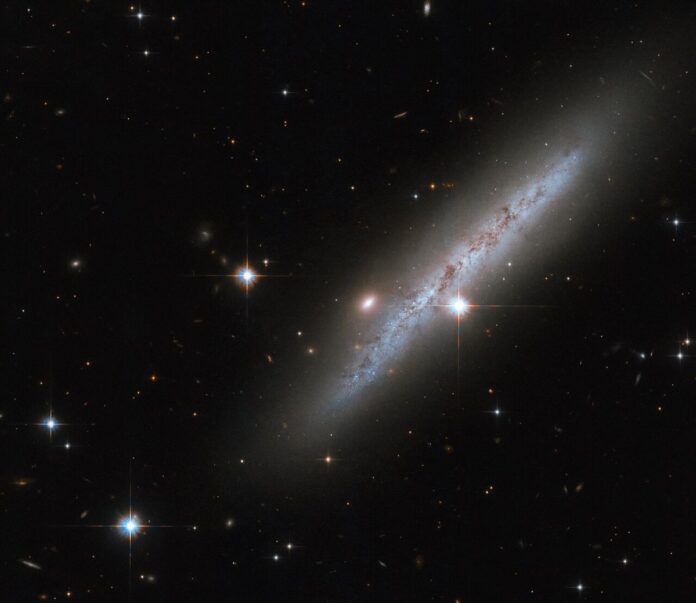The Hubble Space Telescope has snapped a stunning image of a distant galaxy while on a quick break from its usual observations.
The latest Hubble photo captured a side view of the “amorphous” UGC 2890 galaxy, which lies 30 million light-years from Earth in the constellation Camelopardalis (The Giraffe). Like our own Milky Way, UGC 2890 is a spiral galaxy with a central bulge and a rotating star-studded disk.
Back in 2009, astronomers spotted (opens in new tab) a “spectacularly energetic explosion” in the galaxy, which was triggered because one of its stars that was 11 to 15 times more massive than the sun ran out of fuel and exploded as a supernova. (The supernova didn’t actually go off in 2009, of course; given that UGC lies 30 million light-years away, we’re seeing what happened there 30 million years ago.)
Related: Hubble Space Telescope: Pictures, facts & history
Astronomers used several European telescopes in Finland, Italy, Spain and Slovakia to study the supernova from March 30, 2009 — the very next day after its discovery — up until November of that year.
At the time, they recorded the magnitude of the supernova to be -17.37, which they noted was one of the brightest known. For reference, the International Space Station is relatively bright at -6 magnitude, and the sun is extremely bright at -27 magnitude.
Fourteen years after the supernova explosion, Hubble has looked at the remains of this violent cosmic event.
“While the supernova itself has long since faded from view, Hubble recently took a break from its regular observing schedule to inspect the aftermath of this explosive event,” NASA representatives wrote in an image description (opens in new tab) published on Monday (April 3).
To snap this image, Hubble used its powerful Advanced Camera for Surveys (ACS). The ACS instrument is able to see deep sky objects in a wide range of wavelengths from ultraviolet all the way to near-infrared, and shows the UGC 2890 galaxy to be blue with “threads of dark red dust” sprinkled throughout, according to NASA.
Using the ACS instrument, astronomers are studying the areas near the star, whose blast deposited as much as eight to 12 times the sun‘s mass into space. The researchers are making these observations “in the hope of discovering the ages and masses of stars in the neighborhood,” according to the image description.
They say this information will help them identify massive stars that will eventually explode in violent deaths like the 2009 event, “as well as revealing any stellar survivors of colossal supernova explosions.”
Follow Sharmila Kuthunur on Twitter @Sharmilakg (opens in new tab). Follow us on Twitter @Spacedotcom (opens in new tab) and on Facebook (opens in new tab).

